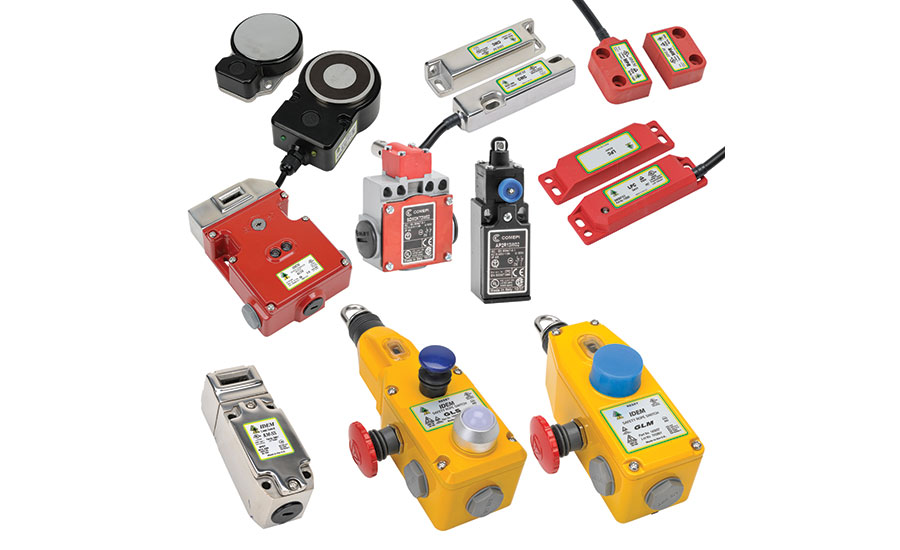Bypass-resistant safety devices ensure effective machine guarding
Essential safeguarding




The most important machine design step is ensuring operator safety. During the design process, hazards are often identified that can be removed, but when a hazard cannot be removed, then various levels of safeguarding must be provided. These typically take the form of machine access guarding and point-of-operation guarding.
It’s often advisable to provide additional safety devices to ensure the guarding is in place and the machine is safe to operate, with best practice requiring the selection of safety devices that are difficult to bypass.
Usually, machines are posted with signs such as “Caution: do not operate without guards in place;” “Warning: moving parts can pinch or cut;” and “Posted: authorized personnel only”. Regardless, there have been many cases where guarding has been bypassed, often with disastrous results.
Careful designers will work to avoid such situations by including features like safety limit switches and safety mats. These must be connected to appropriate safety relays or safety controllers to remove hazardous energy and stop the machine when activated.
Beyond the national and international safety standards, which the design team should be aware of, and the required mechanical machine guarding, it’s important to understand the proper use of these safety devices.
Safeguarding standards of note
OSHA standard 29 CFR 1910.212 identifies a variety of machines usually requiring point of operation guarding. ANSI B11.x specifications apply to all machines and equipment and include many definitions and performance criteria on the use of interlocked guarding and light curtains. NFPA 79 and ANSI/RIA R15.06 also address safeguarding requirements, as do ISO 13849-1 and IEC 62061.
It’s essential that machine hazards are identified and supplemental physical guards are added, such as at pinch points on a machine. Some machine safeguarding standards note that if tools are needed to remove the guard, no monitoring of the guard is needed. But to better enforce the “do not operate this machine without guarding in place” caution, it is sometimes necessary to add guard switches. This is especially important around cutoff wheels, flying knives and presses.
Some end-users also include additional requirements to safely monitor all removable guarding, regardless of the method of removal or opening. This exceeds the requirements of the various safety standards.
Fortunately, safety devices used for guard presence or guard-closed monitoring are cost effective and are easy to install, integrate, test and operate (Figure 1). Whether the guarding is fixed, removable, adjustable, mounted to a machine or installed as a perimeter barrier, safety switches are available to detect their presence. The machine cover, screen, Plexiglas window, gate and/or guard door can all be monitored to protect personnel from machine hazards.
Monitor and locking guards
Guard switches on machine guarding provide safety interlocks to stop a machine if an unsafe condition is present. These guard switches monitor whether the machine guarding is in place, and sometimes lock it in position.
By design, these guard switches are difficult to bypass and must be wired to a safety relay or safety controller to provide reliable monitoring of the defined safety function, such as guarding present and guard doors closed.
Standard limit switches can be easily bypassed by simply tying them down or taping them closed. Safety switches, on the other hand, incorporate design features to resist this kind of bypassing. For instance, tongue interlock safety switches require a specifically related key (tongue) so that they can’t be circumvented by inserting a screwdriver. Some of these devices include a solenoid as well for positively locking the tongue into the switch and preventing it from releasing during unsafe conditions.
Another difficult-to-bypass safety device is a hinge interlock switch monitoring a guard door. Its tight integration on the hinge point makes for a tamper-resistant design, making it difficult for an operator to access the switch mechanism and bypass it without disassembling the hinge.
Typical non-contact switches can often be circumvented with magnets or metal. However, safety versions incorporate magnetic coding to operate the switch, so a simple magnet will not operate these types of switches. RFID coding is also available, and it’s even more difficult to bypass. These non-contact switches are a cost-effective method to monitor guard presence. They are easy to mount and tolerate some misalignment, and by nature are not subject to much wear during operation.
Providing appropriate physical guards and defeat-resistant safety switches is crucial, but there are more options available. Using a safety light curtain or safety mat provides a degree of protection from otherwise unguarded machine hazards or access points. These devices can also be used in addition to physical guards. The light curtain itself can be the machine guard. Mounted horizontally, it can monitor a wide area and be used detect personnel as they approach a machine to slow the machine or robot down, safely stop the machine or warn an operator to stay clear of the hazard.
Safety connections
There are a few approaches when electrically connecting guard presence monitoring switches and safety switches. A basic method is for several guard switches to be connected in series and wired to a single-function safety relay which monitors that the guards are present and closed. In turn this relay would interlock power contactors or other machine controls to remove hazardous motion and energy.
A better but more expensive alternative is a safety controller (Figure 2). It can accept additional inputs, with each safety device wired to its own unique safety input. Safety controllers are more flexible than a relay as they are configured through programming logic. The status of each guard can be easily communicated to non-safety supervisory systems via industrial communication protocols like EtherNet/IP or Modbus TCP/IP.
Jim Krebs is a Technical Marketing Engineer at AutomationDirect. He began his career as a field service engineer and has more than 32 years of experience working with industrial equipment and controls for manufacturing, water treatment, wastewater treatment, food and beverage, and pulp and paper industries. Leveraging his experience with service, installation and training in industry, he currently develops technical manuals, training documents and reference material for products, industrial instrumentation, processes and software help files.
Looking for a reprint of this article?
From high-res PDFs to custom plaques, order your copy today!








